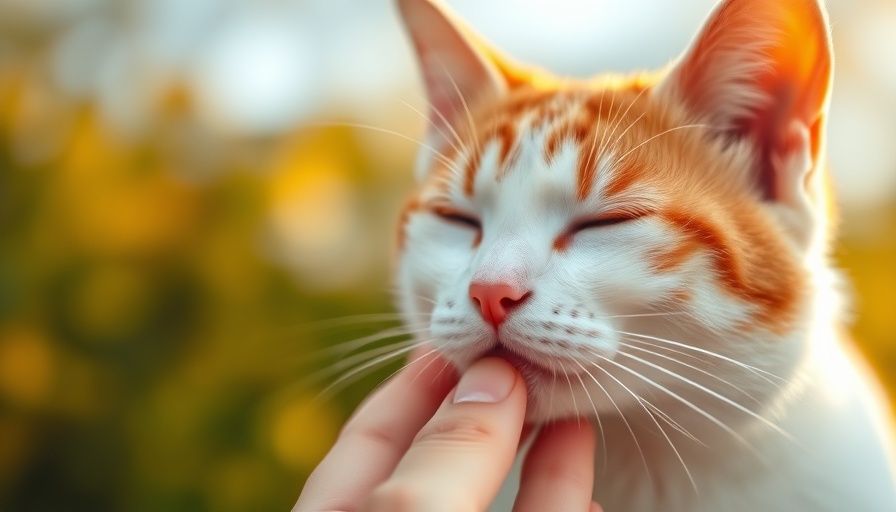
Unraveling the Mystery of Feline Purring
For cat lovers and professionals alike, the soothing sound of a cat's purr signals comfort and contentment. But how does this enchanting audio experience come to be? Contrary to past beliefs, purring is not merely a vocalization; it is a fascinating physiological phenomenon ingrained in the anatomy of our feline friends.
The Mechanics Behind the Purr
Traditionally, it was believed that cats produce their purr by rapidly contracting and relaxing their vocal cords. This assumption suggested a complex control of muscular contractions that could occur up to 30 times per second. However, recent groundbreaking research published in Current Biology reveals a different truth: purring is a result of a unique, instinctual response from the central nervous system, rather than a controlled muscle action. The unconscious brain signals the vocal cords to engage, and with air flowing through, a purr emerges effortlessly.
This natural phenomenon is technically referred to as flow-induced self-sustained oscillation, which allows cats to purr continuously both while inhaling and exhaling. This dual functionality enables cats to communicate a range of emotions, from distress to happiness, more effectively, bringing depth to a sound that pet parents recognize as synonymous with their feline companions’ affection.
The Low-Frequency Enigma
What sets feline purring apart is not just the mechanism of it but also the frequency at which it occurs. Cats typically purr at a frequency of around 20-30 Hertz, which interestingly coincides with the lower auditory thresholds for human hearing. Despite their smaller vocal cords compared to larger animals with lower pitches, cats have a unique feature—specialized pads on their vocal cords that slow vibrations and create that signature low-frequency purr. This distinct sound is not just a pleasant auditory marker; it carries numerous health benefits like reducing stress and promoting healing.
The Importance of Understanding Purring for Pet Professionals
For veterinarians, vet techs, and pet professionals, understanding the complexities of purring adds another layer to cat care. Recognizing the subtle differences in a cat’s purring can be crucial in assessing their emotional and physical state. For instance, while a consistent purr typically signals contentment, a sudden change or disturbance in purring patterns might hint at discomfort or anxiety, emphasizing the importance of keen observation in practice.
Bridging Biology with Behavior
Despite the growing knowledge about purring, research in a laboratory setting remains limited. Cats don’t usually exhibit their purring behavior under the stress of scientific observation, making comprehensive studies challenging. This insight not only sheds light on animal behavior but also reinforces the need for comfort-centric environments within veterinary practices. Initiatives like relaxation areas, soothing music, and gentle handling can better capture the true states of felines during assessments and treatments.
Understanding Cats Beyond the Purr
Beyond purring, continuous advancements in feline behavior research advocate for a holistic understanding of cat care. Pet nutritionists and trainers can incorporate awareness of purring’s significance into their routines, enhancing the well-being of the cats and easing the relationship with pet parents. By marrying the biological understanding with practical applications, professionals can provide enriched lifestyles and training approaches that emphasize emotional health alongside physical well-being.
Concluding Notes: Embracing the Purr
Understanding the purr not only enriches our appreciation for cats but also encourages cat parents and professionals to build stronger, more intuitive connections with feline companions. Armed with this knowledge, caregivers can champion methods to enhance the emotional and physical environments of cats, ultimately ensuring their contentment and health.
 Add Row
Add Row  Add
Add 




 Add Row
Add Row  Add
Add 


Write A Comment